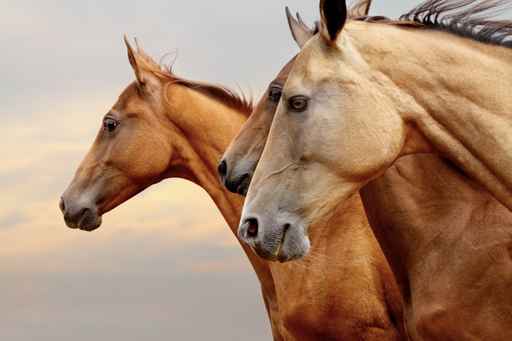Horse Chiropractor in Northumberland

In the early 1950s John McTimoney adapted his Chiropractic Technique to suit horses and other animals and this proved extremely successful and lead to the training of many chiropractors in the UK as well as overseas.
Animals like humans have back and neck pain due to injuries acquired due to falls etc. and they can benefit from Chiropractic treatment.
At every equestrian event and athletic competition there are many horses working well below their potential due to pain and stiffness. Considerable time and money is spent pursuing the causes of and solutions to decreased equine performance.
Owners and trainers administer medications such as anti-inflammatory drugs, dietary supplements; try new equipment such as orthopedic saddles etc. Sometimes these methods solve the problems. Frequently however, the symptoms re-occur and the horse returns to its previous condition. Often the unrecognised cause of pain and stiffness in these animals may arise in the spinal column.
The spinal column is made up of: - 7 cervical, 18 thoracic, 6 lumbar, 5 sacral and 16-18 coccygeal vertebrae. The vertebrae are held together by ligaments to form a firm but flexible support structure. The joints allow the vertebrae to move and their connecting ligaments effectively handle stresses placed on the column at the joints between the vertebrae. The movement between any two vertebrae is small but the cumulative movement of the back and neck is extensive as the horse raises and lowers its head.
Chiropractors use the word subluxation to describe a functional imbalance of the spinal column- not pathology. When movement between two vertebrae is restricted the horse does not have total flexibility, but stiffness restriction and possibly pain. A restriction between two vertebrae may not always cause significant problems in performance but restrictions will accumulate as the spine loses flexibility and the horse compensates by shifting weight or moving a limb differently.
Secondary problems can cause subluxations. Examples are bad shoeing and teeth problems. Conversely subluxations can cause secondary problems such as tendon injuries as a horse will tend to put more strain on one leg if suffering back pain.
Symptoms of subluxations
- Abnormal stance(standing tucked up -spread out posture- resting a limb abnormally)
- Cold back syndrome
- Hanging to one side or jumping to the right or left
- Walking or trotting on two tracks
- Some lamenesses front or rear
- Swishing tail
- Grinding Teeth
- Head carriage too high or low
- Head tilted to one side
- Dragging and squaring off toes
- Asymmetric muscles and muscle wastage
- Refusal and unwillingness to jump
- Resistance in performing lateral or collective movements
- Sensitivity to touch
- Saddle sores or hair wearing away under the saddle especially on one side
- Evasions
- Bad attitude , nappiness
How are bad backs caused?
- Bad riding
- Accidents or falls
- Riders sitting crooked on the horse
- Riders with bad backs
- Ill fitting and damaged saddles
- Accidents in the field
- Getting cast
- Racing injuries
How are subluxations corrected?
When a subluxation is identified an attempt is then made to correct it. This is called an adjustment. Horses will usually have more than one subluxation because as one occurs the body tries to correct it by moving contiguous vertebrae out of alignment to take up the tension in the ligaments. The chiropractor has to have an intimate knowledge of the anatomy of each vertebra and how these vertebrae are joined.
A properly aligned thrust restores the position of the vertebrae by muscle rebound without using much force.
Aftercare
It is of enormous importance that the horse is looked after carefully after treatment. In most cases the horse should be ridden at the walk for a few days to let any stiffness wear off. The rider should be light and the weight should be kept well forward especially when mounting which should be off a mounting block. Lunging and any sharp turns should be avoided for a few days.
Horses should be brought back into work gradually as muscles will have to be built up.
Veterinary Permission
An owner must always consult their veterinary surgeon before seeking Chiropractic treatment.
Patients are advised to have at least two treatments spaced at either weekly or fortnightly intervals followed by further treatments at intervals depending upon the severity of the problem.
Routine checkups are beneficial.
Examining the horse for subluxations.
A case history of the horse is taken.
The horse's gait, stance, muscle balance and tone, vertebral position and joint mobility are taken into account with details of the horse's symptoms and history.
The horse is taken out of the box and is trotted up in hand to check for lameness or unlevel movement. The horse is then examined from head to tail for any misalignment and then is manipulated by rapid but light and gentle adjustments to correct the misalignment. Manipulation is carried out using only the practitioner's hands.
The Chiropractor will usually advise only limited exercise for a few days and gives advice regarding follow up treatments to keep the animal in prime condition.